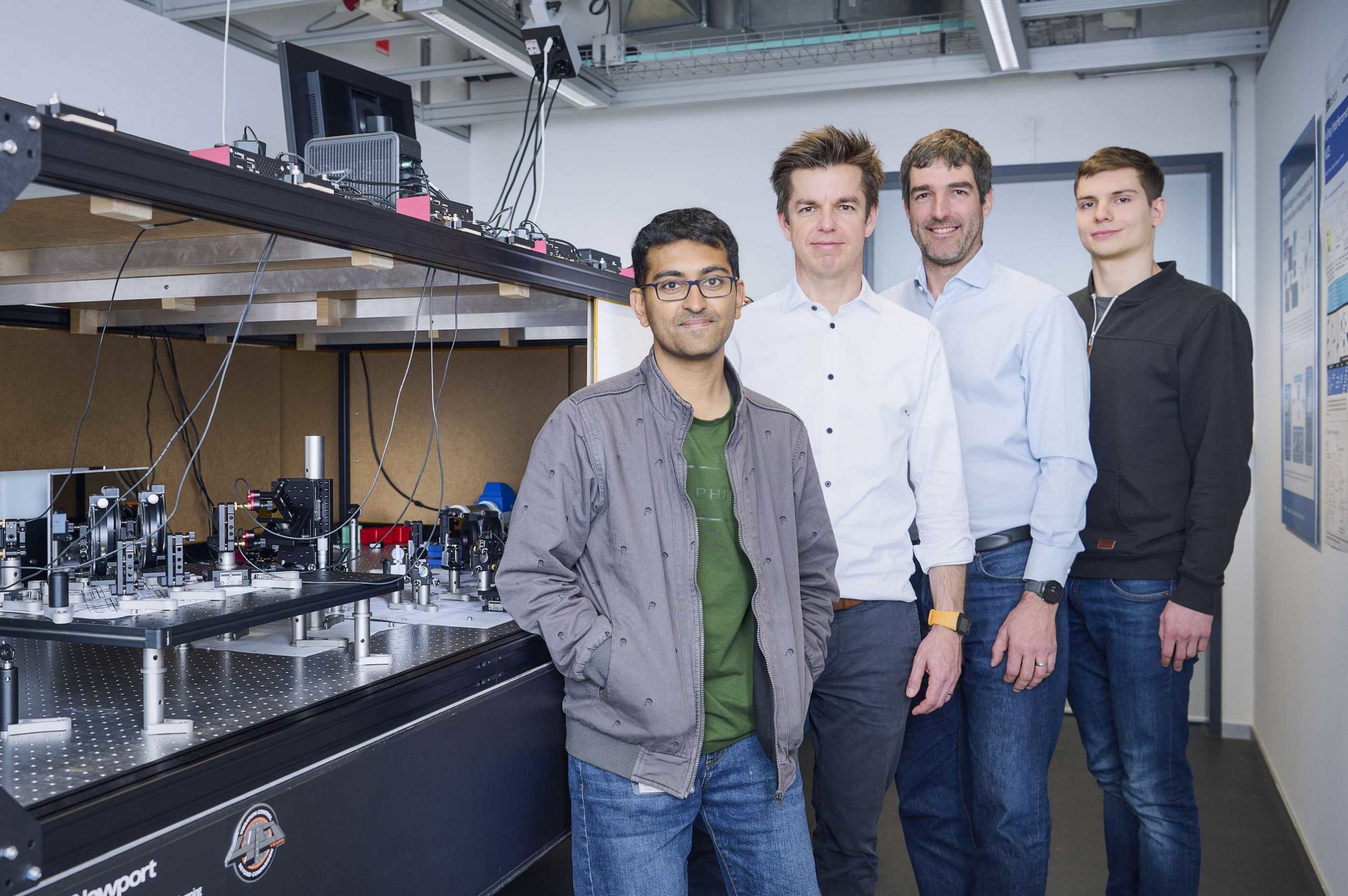With a constellation of five satellites, the international LIFE initiative led by ETH Zurich hopes to one day detect traces of life on exoplanets. A laboratory experiment in the Department of Physics will demonstrate the planned measurement method.
The LIFE mission’s five satellites are connected to form a large space telescope. Illustration by ETH Zurich / Life Initiative
“It’s an important step on a very long road,” says Adrian Glauser, a senior scientist at the Institute for Particle Physics and Astrophysics at ETH Zurich.
In late March, he and Sascha Quanz, a professor of astrophysics at ETH Zurich and head of the Exoplanets and Habitability Group, learned that the Swiss government will contribute nearly three million euros to support the NICE project as part of PRODEX (PROgramme de Développement d’EXpériences scientifiques), a European Space Agency (ESA) programme.
This funding will enable ETH researchers to develop important technological foundations that are indispensable to realising the ambitious LIFE space mission.
The hunt for traces of life
The LIFE (Large Interferometer for Exoplanets) initiative is aimed at undertaking a more detailed study of Earth-like exoplanets – planets that are similar to Earth in size and temperature but orbit other stars. It will focus particularly on planetary systems within a distance of up to 65 light years from our solar system.
The plan is to position five smaller satellites at L2, the Lagrange point that is home to the James Webb Space Telescope. Together, these satellites will form a large telescope that will act as an interferometer to pick up the exoplanets’ infrared thermal radiation. The spectrum of the light can then be used to deduce the composition of those exoplanets and their atmospheres.

They are driving the Nice experiment forward: Mohanakrishna Ranganathan, Sacha P. Quanz, Adrian M. Glauser and Thomas Birbacher (from left to right). Image credit: ETH Zurich / Kilian J. Kessler
“Our goal is to detect chemical compounds in the light spectrum that hint at life on these exoplanets. Earth’s atmosphere, for example, contains oxygen and methane produced by biological activity,” explains Quanz, who leads the LIFE initiative.
ESA has made the mission a high priority – LIFE is considered a candidate for a future major ESA science mission. However, today’s futuristic images showing how the five satellites will operate in space must not obscure the fact that the project relies on a major feat of technology and that many questions remain unanswered. One key question, for instance, is whether the measurements can even be carried out in the way the researchers have in mind.
Precision measurement instruments
The main problem in exoplanet research is that the much brighter light from the host star makes it difficult to detect the faint light its exoplanets reflect or emit. “The instruments have to be able to see the light of a firefly that’s next to a lighthouse 4,000 kilometres away,” Glauser says, explaining the demands on the measuring instruments.
Since it isn’t possible to mechanically block out the host star when using the LIFE telescope, the researchers plan to use what is known as nulling interferometry to eliminate this source of interference. For this, the light that the individual satellites pick up from the host star is phase shifted combined in a way that it effectively cancels it out.
The light from the exoplanet, on the other hand, which hits the satellites coming from a slightly different angle from the plane of the sky, is not cancelled out by this superposition. This makes it possible to see the faint objects next to the bright star – which is the first step towards detecting any clues of chemical compounds in their atmospheres.
Technology suitable for space
Planetary researchers have already demonstrated in earlier experiments that nulling interferometry generally works in the infrared range. The question now is whether this measurement principle can also be used for faint Earth-like planets.
“To ensure that ambient heat doesn’t interfere with the already weak infrared signals, we have to carry out the measurements under the extremely cold conditions that prevail at Lagrange point L2,” Glauser explains.
In NICE, the Nulling Interferometer Cryogenic Experiment, the measurement apparatus is placed in a so-called cryostat that is cooled to a temperature of −260°C.
Here, too, there are a few fundamental questions that need to be answered: How can the instrument in the cryostat be adjusted to nanometre precision from the outside for optimum suppression of the simulated starlight? And what materials are suitable for this?
“We’ll be working on this project with industry partners who have experience with space technologies,” Glauser says. “Our goal with this experiment is to develop a measurement method that can then later also be used in space.” This brings the realisation of the LIFE mission and the search for life beyond Earth a big step closer.
Source: ETH Zurich

